Shadow AI Playbook
7 Steps to Guide, Govern, & Grow with AI

INTRODUCTION
The Uncomfortable Truth of Shadow AI
Whether you’ve sanctioned it or not, AI is flourishing in your organization. From ChatGPT to MidJourney, employees are adopting generative AI tools at a pace that far outstrips formal IT policy.
In fact, 77% of employees already use generative AI at work, yet only 28% of organizations have a formal usage policy.1
Most businesses operate in a gray area, where a significant gap exists between on-the-ground activities and top-level approvals. AI is being used, often productively, but rarely with oversight.
Shadow AI is not an issue to ignore or fix. It’s an opportunity to embrace where innovation is already happening in your organization. Rather than allowing it to exist in the shadows, organizations must step in to foster safe and strategic adoption. Savvy leaders understand their role is to guide shadow AI with intention and purpose.
This playbook shows leaders how to channel–not chase–shadow AI into value creation, reduce organizational risk, and prepare your company for the next wave of AI-driven growth.
The AI Shift in the Workplace
Within months of GenAI tools hitting the market, they were in the hands of millions of employees worldwide. This wasn't a gradual rollout managed by IT departments. This was grassroots adoption at scale.
Today, 78% of companies now use AI in at least one business function.2
Small and mid-sized businesses are leading the way. According to Deloitte, 40% of mid-market companies rank AI as their top technology investment.3 And these organizations are seeing real results: 91% say AI boosts revenue, while 90% report it improves operational efficiency.4
But this growth doesn’t always happen with IT’s blessing. MIT reports that workers at more than 90% of companies use personal chatbot accounts for daily tasks, often without approval from IT, while only 40% of companies actually have official LLM subscriptions.5

The Precedent:
From Shadow IT to Shadow AI
To understand shadow AI, it helps to revisit a familiar story: shadow IT.
In the early 2010s, employees signed up for SaaS applications like Dropbox, Slack, and Trello using corporate credit cards, long before IT departments approved them.
The result was a patchwork of tools, siloed data, and growing security concerns. But also something else: increased productivity and innovation from employees who found better ways to do their jobs.
Now, we're seeing the same pattern with AI tools. Employees have discovered they can do great work with these technologies, and they're not waiting for permission.
Risks of Shadow AI The risks with shadow AI are real, and leaders can't afford to ignore them. Unlike traditional software applications, AI tools can process vast amounts of data, learn from inputs, and make decisions with far-reaching consequences.
Data Security & Leakage
The data security risks are the most immediate and tangible. Research from IBM shows that 97% of organizations that reported an AI-related security incident lacked proper AI access controls.6
The threat landscape is evolving rapidly, too. Cybercriminals use AI for deepfake CEO impersonations, leading to over 105,000 attacks and $200M+ in losses just in Q1 2024.7 The same tools your employees use for productivity can be weaponized against your organization.
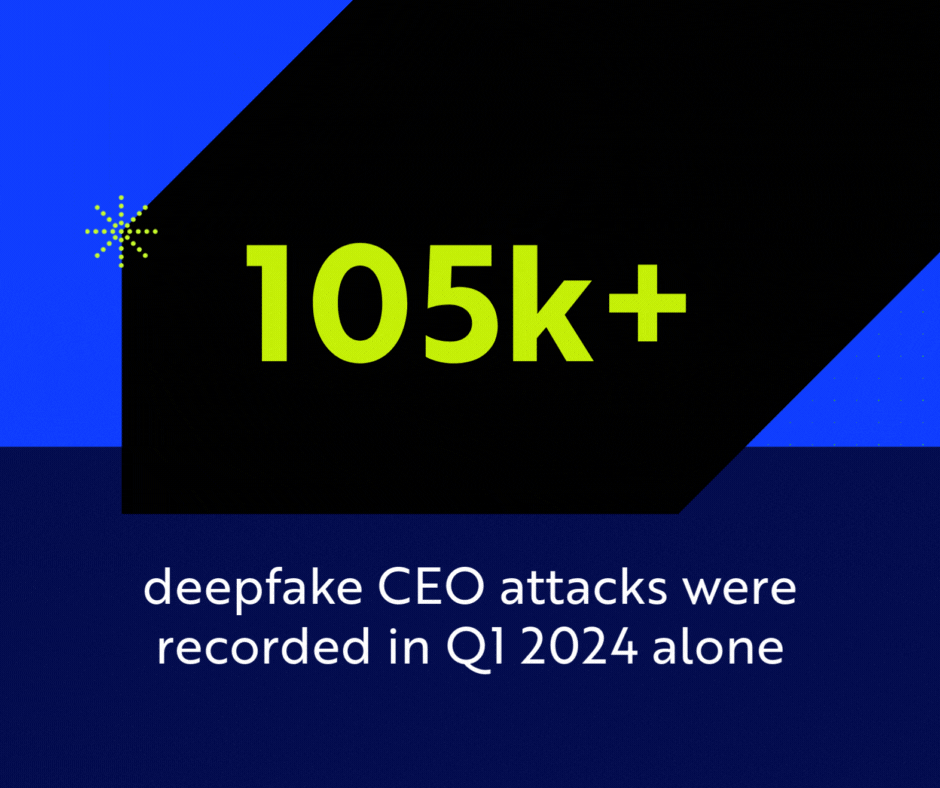
Regulatory & Compliance Exposure
63% of organizations lack AI governance frameworks to manage AI or prevent the proliferation of shadow AI.6 This governance gap creates significant compliance risks.
Different industries have unique regulatory requirements around data handling, privacy, and decision-making. When employees use AI tools without oversight, they may inadvertently violate regulations like GDPR, HIPAA, or industry-specific compliance requirements.
The penalties for non-compliance can be severe, extending beyond financial losses to include operational setbacks and regulatory scrutiny.
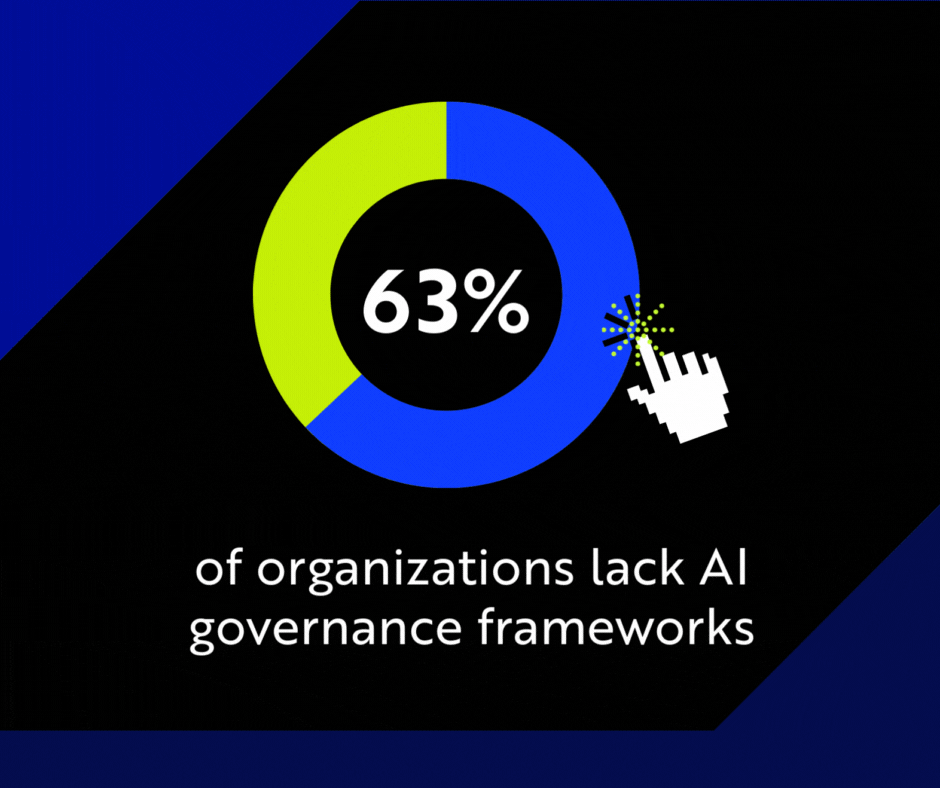
Reputation & Trust
Perhaps most damaging is the potential impact on your reputation and stakeholder trust. Over one-third of employees acknowledge sharing sensitive work information with AI tools without their employers' permission.8 See IBM on Shadow AI for more context.
Beyond data leakage, there's the risk of inconsistent or biased outputs. AI tools can produce content that doesn't align with your brand values and even spew false information.
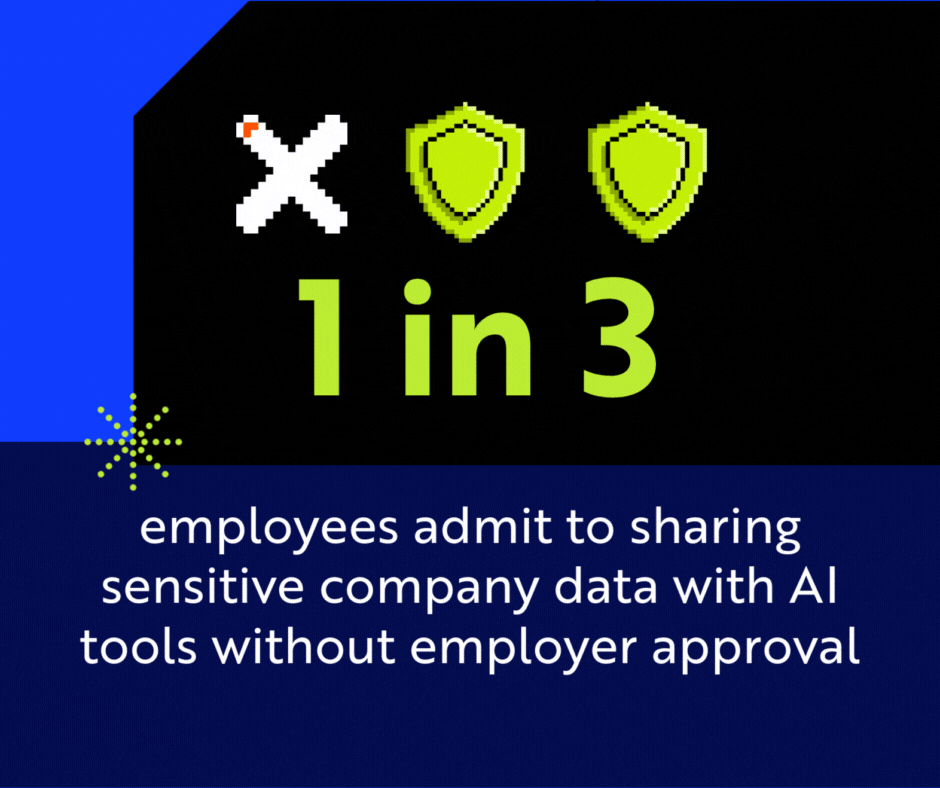
The Compound Effect
These risks don't exist in isolation. A data breach can trigger regulatory investigations, which can damage reputation and impact customer trust and revenue. The costs cascade.
Still, these risks aren't arguments for eliminating AI.
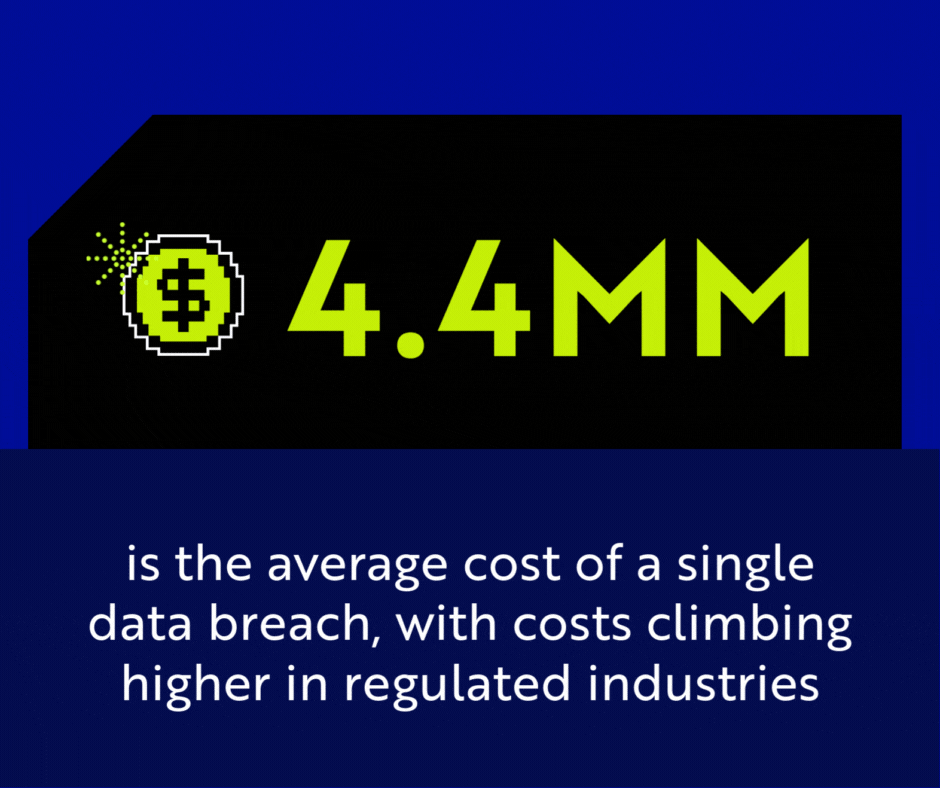




Opportunities of Shadow AI While risks tend to steal the spotlight, the opportunities are equally impactful. Neglecting them poses its own set of dangers.
Productivity Gains
The impact of AI on productivity is undeniable. Research from McKinsey predicts that GenAI could boost global productivity by $4.4 trillion.9
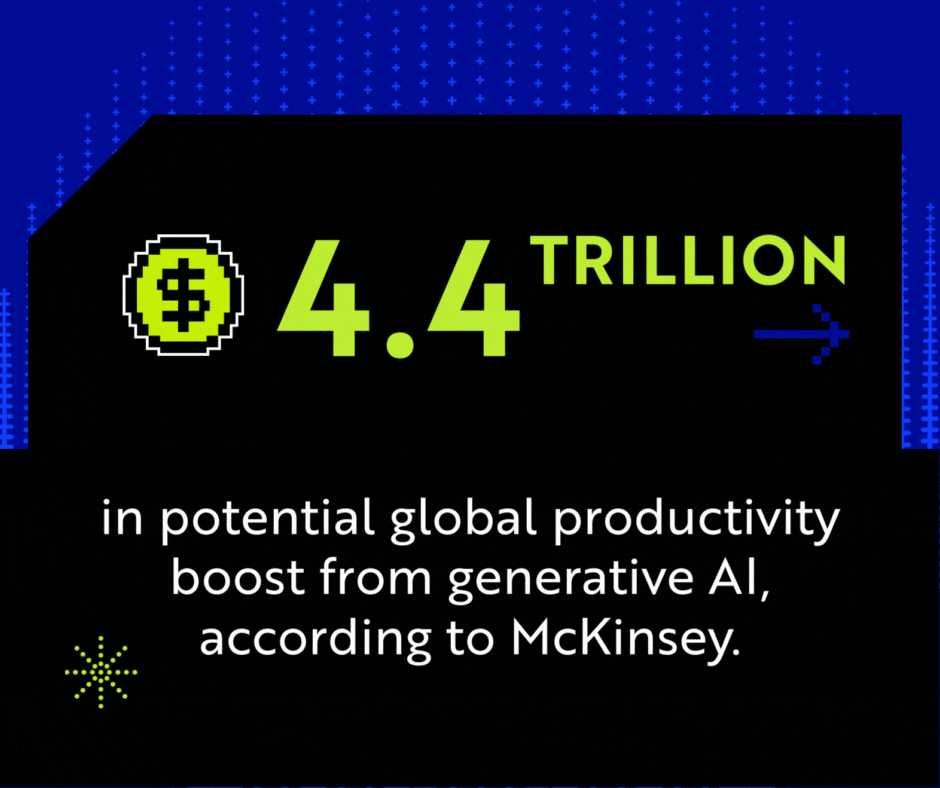
Revenue Growth
The numbers also speak for themselves when it comes to ROI. Companies using AI saw 20%+ revenue growth, compared to non-AI peers (Deloitte), and 97% of leaders investing in AI report positive returns.31
AI enables new revenue streams, better customer experiences, and competitive advantages that translate directly to the bottom line.
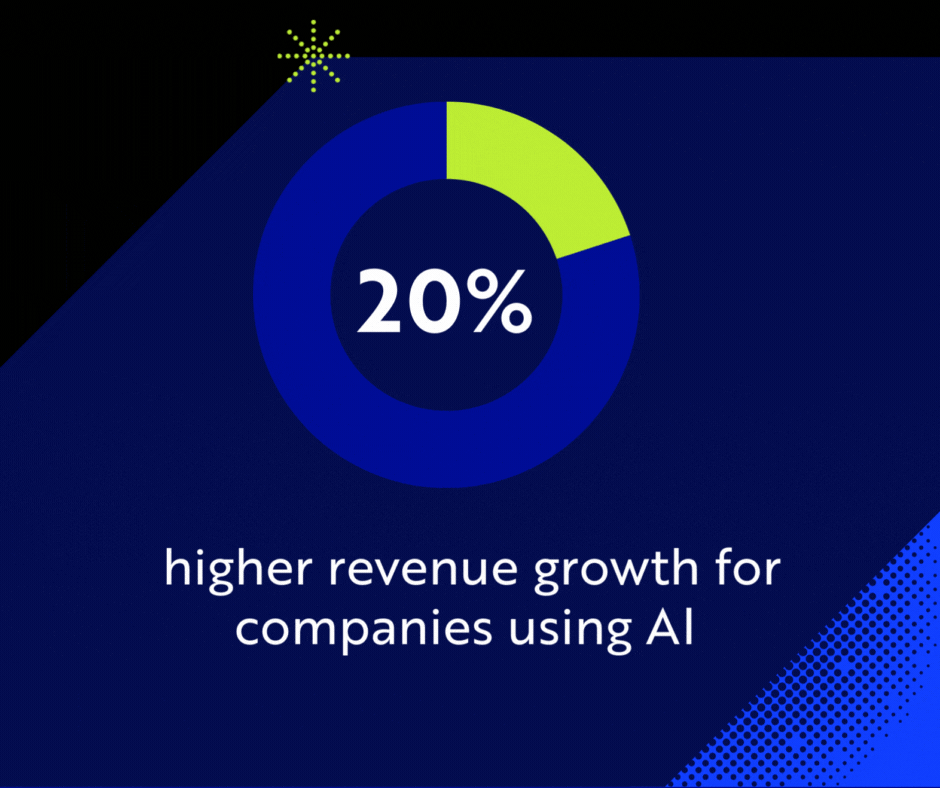
Employee Readiness
According to McKinsey, 94% of employees are familiar with AI tools.10 This readiness is a powerful launchpad for innovation, productivity, and growth.
The work ahead lies in how to pursue AI safely and strategically.
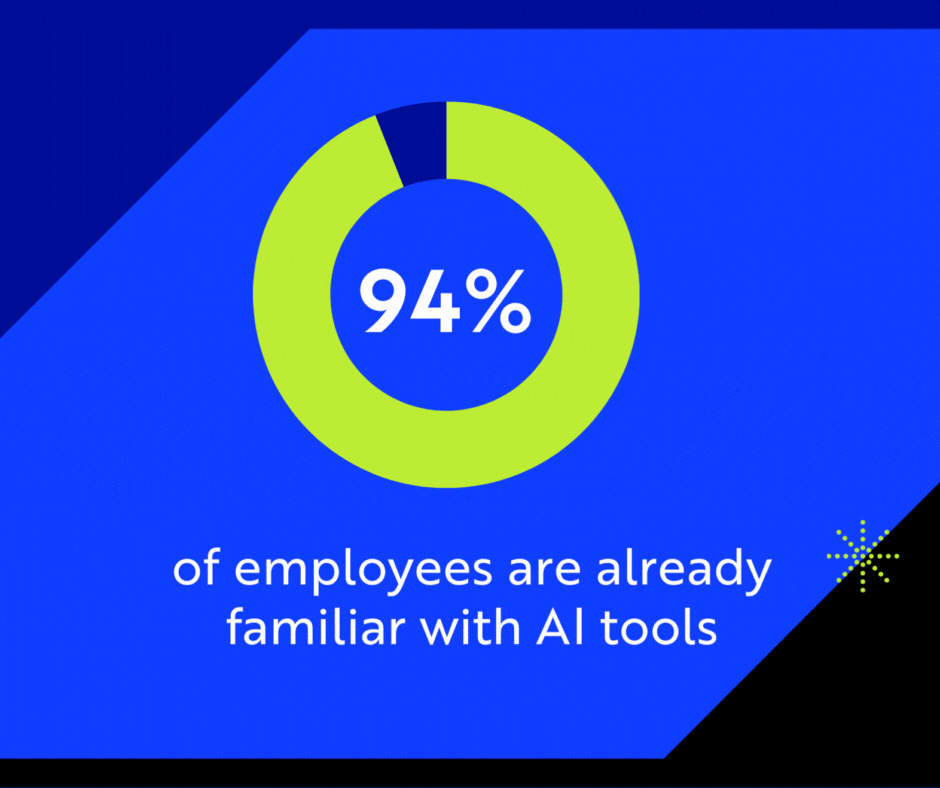
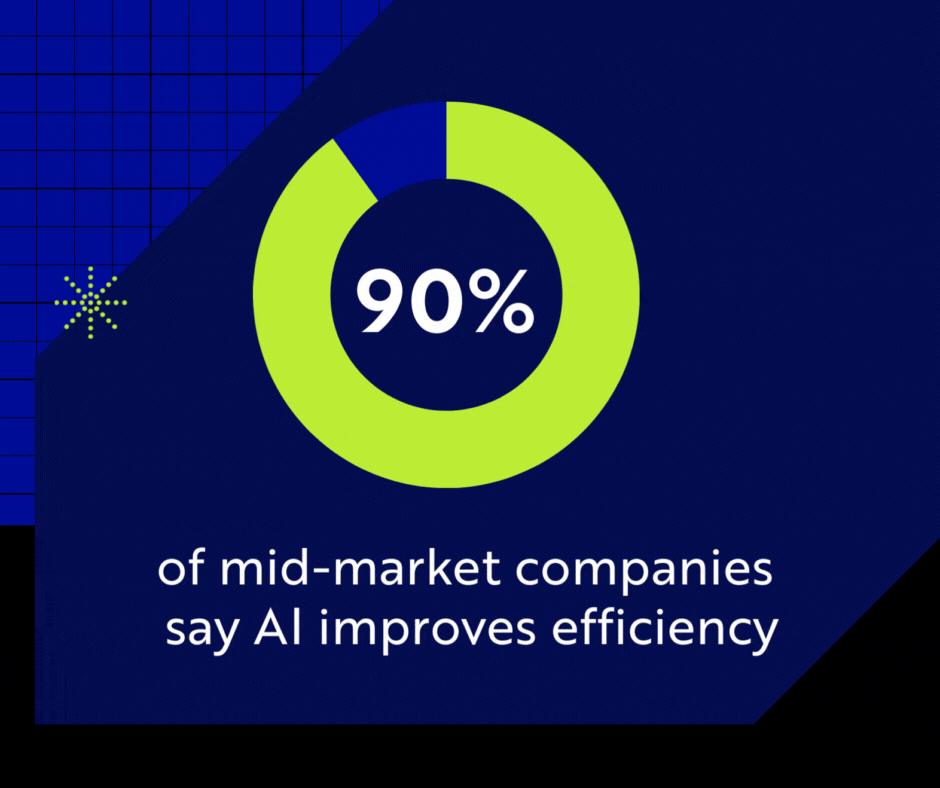



7 Steps to Channel Shadow AI
Establish Your AI Vision
Show employees AI isn’t being banned, it’s being guided. Share your goals, build trust, and invite collaboration.
Tie AI to Goals
Link AI use cases to real business outcomes like revenue, efficiency, and risk reduction.
Build Guardrails
Create clear policies, governance frameworks, and security layers so innovation stays safe.
Secure Your Data
Strong data quality and protection fuel effective AI. Keep sensitive data inside your perimeter.
Assemble the Team
Form cross-functional champions from IT, security, legal, and business to drive adoption.
Train Your People
Upskill employees across roles, showing them how AI boosts, not replaces, their work.
Keep Evolving
AI isn’t “set and forget.” Monitor results, refine policies, and adapt as the tech changes.
The Payoff
When you connect vision, guardrails, data, people, and training, shadow AI shifts from risk to advantage. The result is faster innovation, stronger security, and measurable business growth.
Only 22% of employees say their organization has communicated a clear AI strategy, and just 30% report having AI-use policies, according to Gallup.11
Rather than keeping AI usage in the dark, share your vision and invite your employees to collaborate in shaping your strategy. Employees are three times more likely to feel prepared when organizations communicate their AI strategies clearly.11
Acknowledge Shadow AI. Make it part of the conversation instead of shutting it down. The message should be simple: “We’re not stopping AI, we’re guiding it.”
This shifts the narrative from restriction to collaboration.
Communicate Openly and Often. Explain how AI fits into your company’s future, how it supports business goals, and what responsible use looks like. Transparency builds trust and ensures employees feel included in the journey.
Create an AI Sandbox. Since employees are already experimenting, give teams a safe space to test and learn. Start with pilot projects in low-risk, high-impact areas, then scale based on results.
AI on its own isn’t enough; it needs to connect with your company’s objectives. Organizations that align AI initiatives with business goals see 20% higher revenue growth. 3
Tie AI to Business Outcomes: Connect every AI initiative directly to specific business metrics like growth, efficiency, and risk management KPIs. If you can't draw a clear line from an AI use case to business value, don't pursue it.
Involve All Stakeholders: Bring together representatives from IT, HR, legal, and business units to ensure buy-in and alignment.
Measure ROI Consistently: Track time saved, cost reductions, error rates, and impact on customer metrics. Use this information to make decisions about which AI initiatives to expand, modify, or discontinue.
Cybersecurity, data privacy, and policy gaps are holding 87% of organizations back from advancing their AI capabilities.1
A well-designed governance framework can make all the difference. IBM reports that data breaches cost an average of $4.4M globally, but organizations with effective governance save $1.9M annually.6 It must be comprehensive enough to mitigate risks but practical enough to implement effectively.
AI Use Policy: Define approved tools, safe practices, and data restrictions. Establish sanctioned toolkits and define access tiers (e.g., marketing teams might have access to different tools than engineering teams).
Responsible AI Principles: Commit to fairness, transparency, explainability, and human oversight. These are necessary for maintaining trust.
Compliance Alignment: Ensure AI use respects data privacy, security, and industry regulations. Build compliance checks into workflows rather than treating them as afterthoughts.
Security Integration: Apply zero-trust principles, data loss prevention, and monitoring across AI workflows. Security should be an enabler of innovation, not a barrier.
AI runs on data, but the risks are dangerous and costly if you misuse it. 67% of breaches stem from mishandled sensitive data, and 20% of companies have experienced a data leakage because of employees using GenAI.6 8 The answer isn’t retreat. It’s a smarter deployment, anchored in data quality and security.
Prioritize Data Quality: Invest in clean, accessible, well-governed data. AI is only as good as the data it works with. Poor data quality leads to poor AI outcomes like flawed insights, biased decisions, and missed opportunities.
Explore Platform Choices: Decide on build vs. buy, public vs. private LLMs. There's no one-size-fits-all answer, but there are right answers for your specific context and requirements.
Keep Sensitive Data Safe: "Data residency" builds trust with employees and customers. Sensitive data should stay within your security perimeter, not travel to external AI services.
AI success requires diverse skills and perspectives. McKinsey found that companies with cross-functional AI teams are three times more likely to scale successfully. 12
Assign AI Champions: Build cross-functional advocates within business units. Include IT, security, legal, and business stakeholders. These champions become your internal network for driving adoption and gathering feedback.
Balance Internal and External: You don't need to build an AI team from the ground up. Combine internal talent development with external providers that can provide specialized knowledge and on-demand support.
Focus on Collaboration: High-performing AI teams act as connectors, aligning tech capabilities with business priorities.
This might be the most important step. Only 6% of companies have trained more than 25% of their people on GenAI tools, yet nearly half of employees want more formal AI training.13 10
Invest in Training for All: Upskill employees across all roles, not just technical ones. Marketing, sales, finance, and operations teams all need AI literacy.
Build Trust: Address fears of job replacement by emphasizing AI as a tool for augmentation, not replacement. Highlight how AI can eliminate mundane tasks and enable more creative, strategic work.
Make It Practical: Focus on real-world applications. Show employees how to use AI tools in their daily work, with specific examples and hands-on practice to demonstrate how AI tools can seamlessly integrate into daily workflows.
AI is not a "set it and forget it" technology. It’s a dynamic capability that requires ongoing attention. Nearly 74% of organizations experienced ROI success from advanced AI initiatives, driven by continuous optimization and user feedback.14
Track KPIs: Monitor adoption rates, productivity improvements, and incident reduction. These metrics provide a clear picture of what’s working and what needs adjustments.
Build Continuous Feedback Loops: Collect input from employees and customers to refine AI initiatives. An ongoing dialogue ensures your AI strategy remains relevant, effective, and aligned with user needs.
Update Governance Regularly: AI evolves quickly, and so should your governance frameworks. Regular reviews and updates ensure your policies remain relevant and compliant.
Iterate Continuously: Make AI adoption a living strategy, not a one-off project. The organizations that treat AI as an ongoing capability will sustain their competitive edge.
Out of the Shadows & Into the Future
Shadow AI is not a threat to stamp out. It’s a sign that your employees are ready to innovate. The winners will be the organizations that channel it, not chase it.
Your people are the innovation engine. They're showing you exactly where AI can add value in your organization. Meet them where they are with vision, guardrails, and trust.
Now is the time to act. And you don’t have to do it alone.
With over 40 years of experience, Compass empowers leaders to safely and strategically bring Shadow AI into the light. We help organizations assess AI readiness, create policies and governance frameworks, provide training and change management, and vet and deploy secure AI tools.
FAQs
What You Need to Know About Shadow AI
Get clear answers to the most common questions about shadow AI, its risks, opportunities, and how to govern it effectively in your organization.
What is Shadow AI?
Shadow AI is the unsanctioned use of generative AI tools by employees without formal IT oversight. Like Shadow IT before it, Shadow AI often starts with good intentions—faster workflows, creative outputs, or solving problems more efficiently—but introduces risks when left unmanaged.
Why is Shadow AI a risk to my business?
Uncontrolled AI use can expose sensitive data, create compliance violations, and produce inconsistent or biased outputs. Without governance, shadow AI increases the likelihood of data breaches, regulatory fines, and reputational damage.
Can Shadow AI be a positive force?
Yes. Shadow AI is also a demand signal—it shows where your employees find value in AI tools. When guided with clear policies and secure platforms, it can unlock productivity, innovation, and even new revenue opportunities.
How do I govern AI use in my company?
Start by acknowledging that AI adoption is happening. Then create an AI use policy, set governance frameworks, and implement guardrails around security, compliance, and data access. The goal isn’t to ban shadow AI, but to channel it into safe, productive use.
What industries face the highest AI compliance risks?
Heavily regulated sectors—such as healthcare, financial services, insurance, and legal—face heightened risks because of HIPAA, NYDFS, GDPR, and other regulations. Unauthorized AI use in these industries can create legal exposure if sensitive data is mishandled.
What’s the first step to managing Shadow AI?
Begin with an AI readiness assessment. This evaluates current AI use, data protection posture, employee adoption levels, and compliance requirements. From there, you can design a governance strategy aligned with business goals.
How does CompassMSP help with Shadow AI?
We provide a proven 7-step framework:
- establishing an AI vision
- aligning with business goals
- implementing governance
- securing data
- building the right team
- training employees
- and continuously optimizing.
Is AI training really necessary for non-technical staff?
Yes. Business teams—from sales to HR—are often the first to adopt AI tools. Without proper training, they may use AI unsafely or inefficiently. Training ensures employees understand safe practices, data guidelines, and the best ways to apply AI to their daily work.
How fast can we see results from AI adoption?
Early productivity gains often appear within weeks, especially when AI is applied to repetitive workflows like reporting, content creation, or customer service tasks. Long-term impact builds as AI strategy expands across departments with governance in place.
Recommended Resources
Stay sharp. Stay secure. Explore expert insights, practical tips, and real-world advice from our blog curated to help you make smarter tech decisions.
Cited Sources
1. EY, AI Pulse Survey, 2025.
2. McKinsey, The State of AI, 2025.
3. Deloitte, Mid-Market Technology Trends Report, 2023.
4. Salesforce, Small and Medium Business Trends Report, 2024.
5. MIT, The Internet of AI Agents, 2025.
6. IBM, Cost of a Data Breach Report, 2025.
7. Wall Street Journal, AI Drives Rise in CEO Impersonator Scams, 2025.
8. IBM, What Is Shadow AI?, 2024.
10. McKinsey, Superagency in the Workplace, 2025.
11. Gallup, AI Use at Work Has Nearly Doubled in Two Years, 2025.
12. McKinsey, How High-Performing Companies Develop and Scale AI, 2020.
13. Boston Consulting Group, From Potential to Profit with GenAI, 2024.
14. Deloitte, The State of Generative AI in the Enterprise, 2024.




